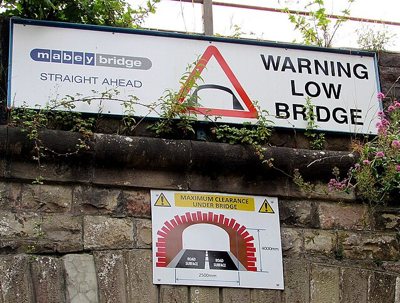Going on a long road trip means there's always a possibility of travelling through unfamiliar roads. Road conditions, speed restrictions and local laws should always be considered to avoid any problems while travelling. There's also the possibility of going through bridges and tunnels which could pose some problems if you're travelling with a relatively high vehicle such as an RV.
The challenges and local restrictions while on the road could hinder a fun road trip, but as long as you're prepared and aware of these restrictions, you'll be well-prepared to handle any issues.
Vehicle Height Restrictions In The US
In the US, there is no federal law on height restrictions for vehicles, resulting in each state having its own height restrictions. For example, the states of California, Texas, Nevada, and Arizona enforce a height restriction of 14 feet, while New York, New Jersey, Maine, and Rhode Island have a lower height limit of 13 feet and 6 inches. The state with the highest height limit for vehicles is Alaska, with a limit of 15 feet.
Notably, west coast states tend to have higher limits compared to states in the east. For a cross-country trip, it's best to find a vehicle that can pass the restrictions on states with lower height restrictions.
 Bridge and Tunnel Clearance
Bridge and Tunnel Clearance
While state restrictions on vehicle height are simple to understand, bridges and tunnels are another story. Each bridge and tunnel has its respective clearance and failing to follow these restrictions can cause road mishaps. Usually, height clearance is clearly indicated especially for bridges with very low clearance. The standard clearance for bridges and tunnels is 13-14 feet, but some tunnels with special designs may require lower clearance.
Fortunately, advances in technology have made it easier to prepare for road trips when it comes to bridge and tunnel clearances. Many GPS apps now come with warnings about restrictions. This is especially true for truckers' GPS systems, since their vehicles' heights require careful planning. State websites also contain this important information, allowing you to check beforehand, especially when traveling with a relatively tall RV.
Can My Vehicle Pass The Restriction?
Usually, you don't have to worry about vehicle height restrictions when you're travelling with vehicles without any height modifications since most stock vehicles are around 6-7 feet tall. Modifications could push a truck up to 9 feet tall - still lower than any state restriction.
If you are driving an RV, you will need to know its height to ensure safe passage under bridges and through tunnels.
The height of your RV depends on its class.
The following are the height range for each RV Class:
- Class A - (12-14 feet)
- Class B - (8-10 feet)
- Class C - (10-12 feet)
- Fifth Wheel Campers - (12-13 feet)

You don't have to worry about running into legal problems on the road when you're using Class B or C RVs. On the other hand, Fifth Wheel Campers and Class A RVs could limit the states you could visit. Additionally, some owners may modify their RVs to accommodate upgrades. If modifications have been made, ensure you manually measure your RV before embarking on a road trip to avoid unnecessary problems.
In conclusion, understanding vehicle height restrictions is crucial for a safe and fun road trip. By knowing your vehicle's height and familiarizing yourself with local regulations and bridge and tunnel clearances, you can avoid potential problems.
